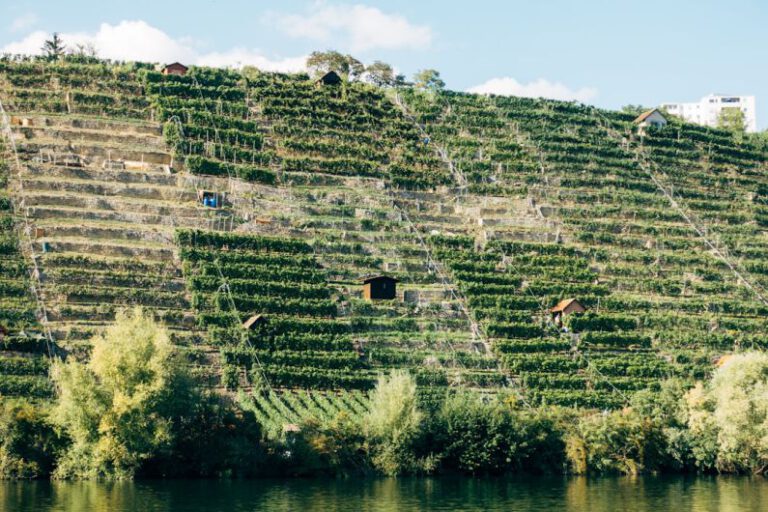Waterfront Wonders: Transforming City Shorelines
City shorelines have always been a focal point for urban development, offering a unique blend of natural beauty and urban vibrancy. Over the years, cities around the world have been harnessing the potential of their waterfronts, transforming once neglected areas into vibrant hubs of activity and community engagement. From revitalized industrial ports to reclaimed riverfronts, these waterfront wonders have become symbols of urban renewal and sustainability.
Revitalizing Industrial Ports
Industrial ports, once bustling hubs of trade and commerce, often fell into disrepair as industries shifted and urban centers expanded. However, many cities have successfully revitalized these areas, turning abandoned warehouses and dilapidated docks into thriving cultural and recreational spaces. By preserving the historic character of these sites while adding modern amenities, cities have created unique destinations that attract both locals and tourists.
One prime example of this transformation is the Brooklyn Bridge Park in New York City. Built on the site of a former shipping port, the park now boasts lush green spaces, playgrounds, and stunning views of the Manhattan skyline. Visitors can stroll along the waterfront promenade, kayak in the East River, or attend outdoor concerts and events. By repurposing the industrial infrastructure of the past, Brooklyn Bridge Park has become a beloved community asset that celebrates the city’s maritime heritage.
Reclaiming Riverfronts
Riverfronts have long been coveted for their scenic beauty and recreational opportunities, yet many urban waterways were neglected and polluted for decades. In recent years, cities have been reclaiming their riverfronts, cleaning up waterways, and creating public spaces that reconnect residents to the waterfront. These revitalization efforts not only improve the quality of life for city dwellers but also promote environmental sustainability and biodiversity.
London’s Thames River provides a compelling example of successful riverfront revitalization. Once known for its polluted waters and industrial blight, the Thames has undergone a remarkable transformation in recent years. The South Bank, once a neglected stretch of warehouses and factories, is now a cultural hotspot with art galleries, theaters, and restaurants lining the riverfront. The Thames Path, a continuous walking route along the river, allows pedestrians to explore the city’s historic landmarks and scenic vistas. By reclaiming the riverfront as a public asset, London has created a vibrant waterfront destination that attracts millions of visitors each year.
Embracing Green Infrastructure
As cities grapple with the challenges of climate change and urbanization, green infrastructure has emerged as a key strategy for creating sustainable and resilient waterfronts. By integrating green spaces, such as parks, wetlands, and green roofs, cities can mitigate the impacts of flooding, heatwaves, and pollution while enhancing biodiversity and improving air quality. These green spaces not only provide ecological benefits but also offer opportunities for recreation, education, and community engagement.
Copenhagen, often hailed as a model for sustainable urban planning, has embraced green infrastructure along its waterfront. The city’s Harbour Bath project transformed former industrial docks into public swimming areas, complete with floating pontoons and water quality monitoring systems. By creating safe and accessible spaces for swimming in the heart of the city, Copenhagen has reconnected residents to the waterfront while promoting physical and mental well-being. The Harbour Bath project exemplifies how cities can leverage green infrastructure to create inclusive and resilient waterfront environments that benefit both people and the planet.
Celebrating Waterfront Culture
Waterfronts have long served as centers of culture and commerce, reflecting the unique identity and history of a city. By preserving and showcasing waterfront heritage, cities can celebrate their maritime roots and create vibrant cultural destinations that attract residents and visitors alike. Waterfront museums, festivals, and public art installations can help tell the story of a city’s relationship to the water and engage the community in meaningful dialogue about its past, present, and future.
Sydney’s Darling Harbour exemplifies how cities can celebrate waterfront culture through innovative placemaking and programming. Once a bustling industrial port, Darling Harbour is now a dynamic waterfront precinct with museums, restaurants, and public spaces that host a variety of cultural events and activities. The Australian National Maritime Museum, located on the waterfront, showcases the country’s maritime history through interactive exhibits and historic vessels. Visitors can also enjoy outdoor performances, fireworks displays, and festivals that bring the waterfront to life year-round. By embracing its maritime heritage, Darling Harbour has become a beloved destination that honors the past while looking towards the future.
Conclusion: A Blueprint for Waterfront Transformation
City shorelines are dynamic landscapes that hold immense potential for urban transformation and revitalization. By repurposing industrial ports, reclaiming riverfronts, embracing green infrastructure, and celebrating waterfront culture, cities can create vibrant and sustainable waterfront destinations that enhance the quality of life for residents and visitors. These waterfront wonders not only provide recreational and cultural opportunities but also promote environmental stewardship and community engagement. As cities continue to evolve and grow, the transformation of city shorelines serves as a blueprint for creating inclusive, resilient, and thriving urban spaces that connect people to the water and to each other.






